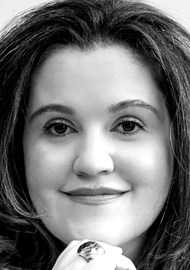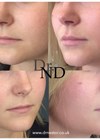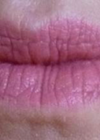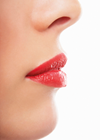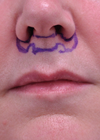Introduction
‘Beauty is in the eye of the beholder’. Although it sounds true, most often some beauty patterns or preferences can be innate or intuitive [1]. When it comes to the ideal lips, how much of their features can be attributed to what we see and learn from fashion magazines and social media? How much is considered unlearned or an innate behavior? Do the ideal lips preferences change over time or across generations?
The opinion of our grandparents regarding face and lips beauty can be similar or very distinct from the thoughts of our children, considering the environment they live in, their age and ethnicity, but also the visual information they receive from different sources, like TV, newspapers, internet and digital influencers.
It seems clear that the perception of beautiful and attractive lips may differ among patients and aesthetic practitioners. The unanimous point, however, is that beauty is a universal wonder. This is particularly applicable to the lips, which constitute a key element of attractiveness. It has been exhaustively stated that the shape and proportions of the lips directly impact on self-esteem. People with lips that are considered beautiful by themselves and by society are more self-confident, and this improves social acceptance and relationships. Just like the eyes and brows, the shape and position of the lips reflect people’s feelings and emotions. In addition, the lips’ natural fullness remarkably influences facial attractiveness, and ultimately, how happy people are with their appearance. Indeed, people with higher self-esteem and social confidence are more likely to reach higher labor-market achievements and perform better in marriage and relationships [2].
Broadly speaking, natural lips come from a good balance of the upper and lower lip. According to the literature, there is a ‘golden ratio’ for upper to lower lips of 1:1.6. Appropriate lips proportions alongside a slightly greater protrusion of the upper lip have been considered a pattern of beauty, especially true for Caucasian women [3]. As aesthetics practitioners, we all have come across an increased demand for hyaluronic acid (HA) lip fillers. Unfortunately, bizarre, overfilled lips are commonly seen. Unrealistic expectations with subsequent frustrations, when the filled lips are not the same as the artist or YouTuber they admire, can reflect on an increasing prevalence of body dysmorphic disorder (BDD) [4]. Therefore, in parallel with the rise of digital influencers’ marketing and the role of social media in people’s lives, we aim to investigate the most popular and wishful upper-to-lower lip ratio among potential fillers patients and correlate the findings with their gender and the generation they belong to, namely Baby Boomers, Millennials, Generations X and Z. Ultimately, based on our findings, we aim to develop recommendations and orient aesthetic professionals on how to get the best results of lip fillers and patient satisfaction, taking into account the age, gender and ethnicity of our public.
Methods
Survey design
An online six-question multiple-choice survey through Google Forms displaying two set of pictures of two volunteer model pictures was performed. The models were Caucasian – Model 1 of Fitzpatrick skin type II, aged in her early 30s (Figure 1), and Model 2 of phototype III, aged in her late 20s (Figure 2).
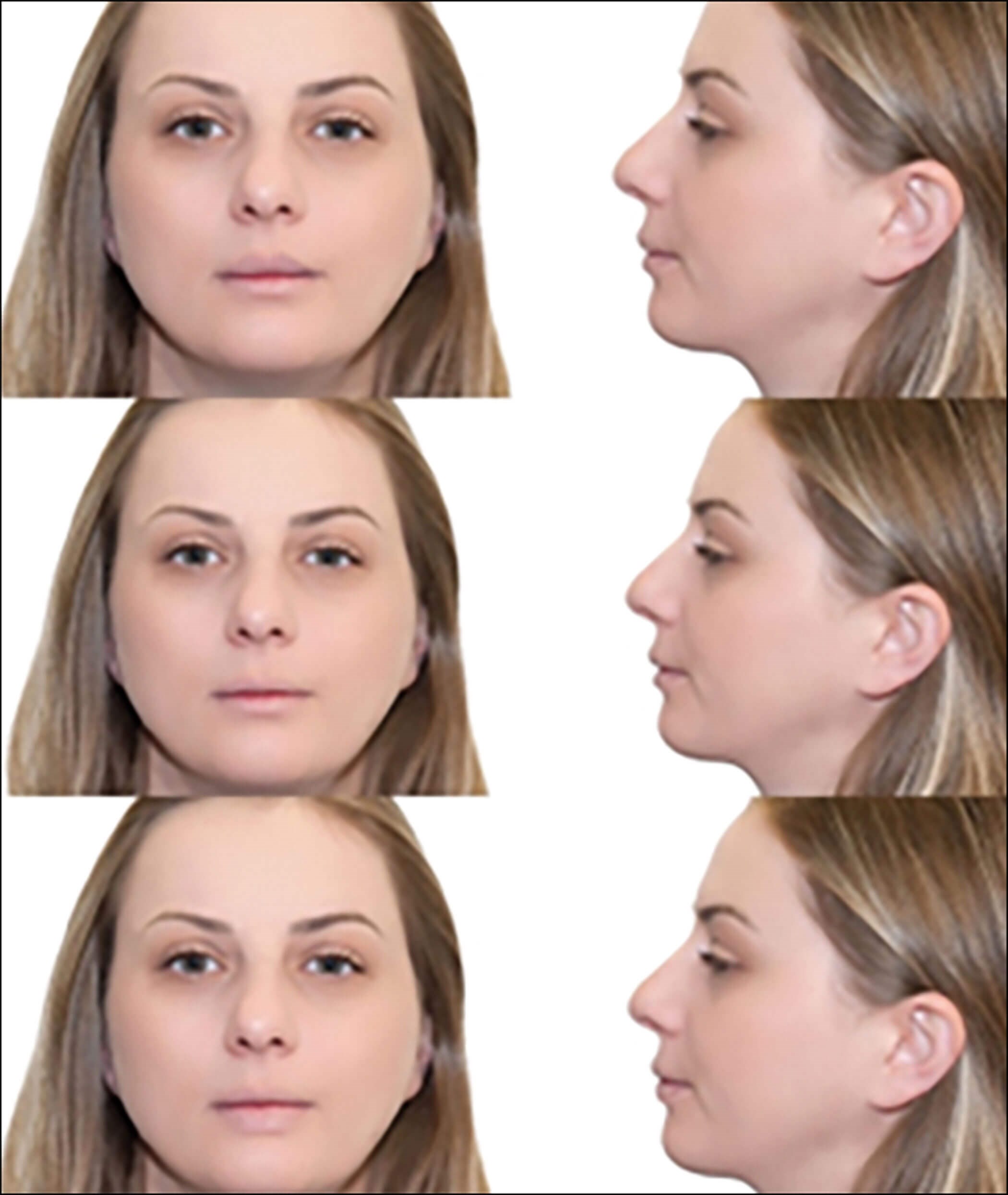
Figure 1: Pictures of Model 1.
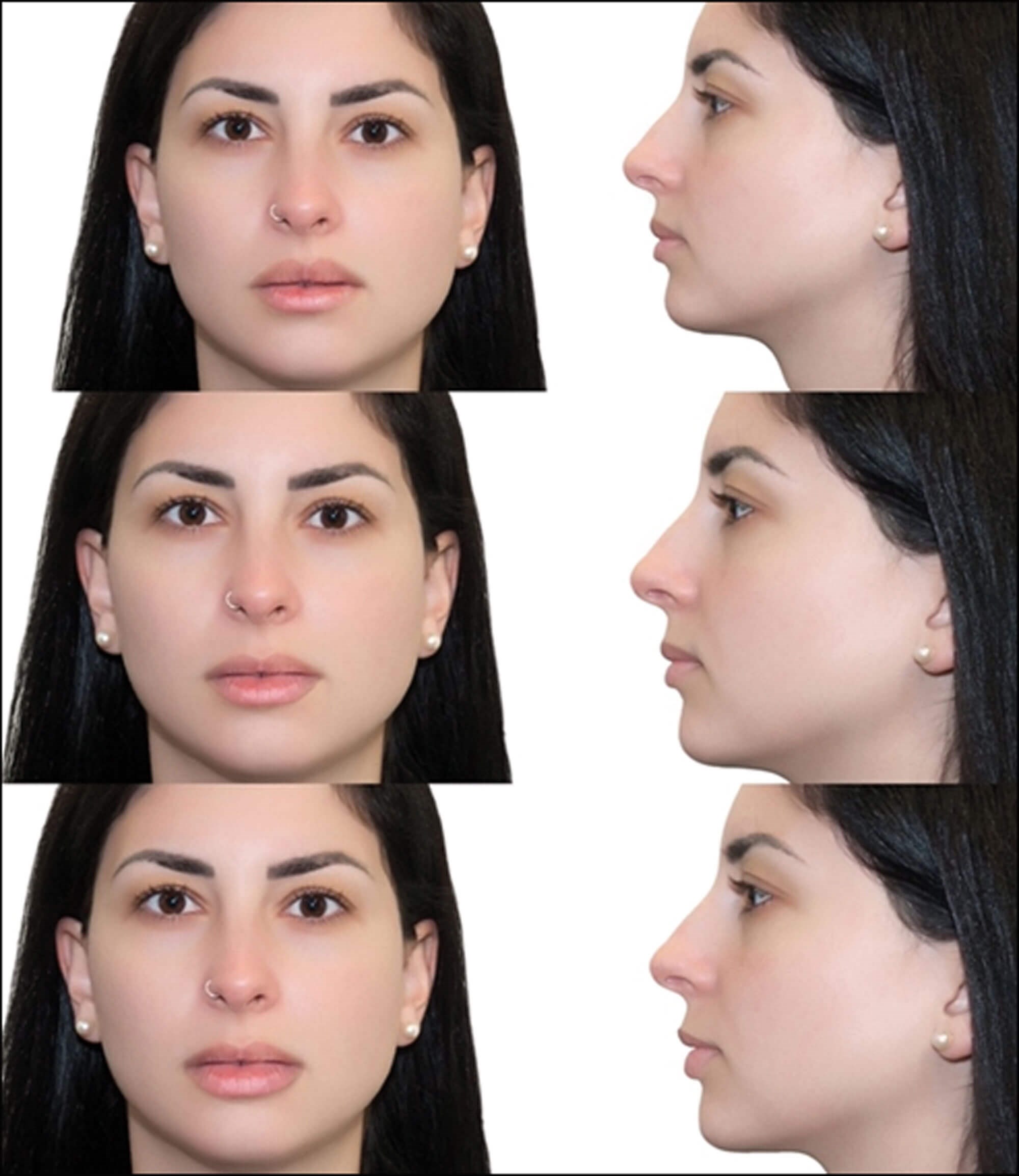
Figure 2: Pictures of Model 2.
Each model was presented in anterior and profile view with digitally modified lips to an upper:lower lip ratio of 1:1, 1:1.6, and 1:2. The photo shooting and digital modification were performed by a professional photographer (Gkaniatsa Afroditi Photography, Arta, Greece) using Adobe Photoshop (CS6, Adobe Inc., San Jose, CA, USA).
Gender, age group, opinion on the naturality of the participants’ choice, and comments of the participants were also collected to be associated with the results.
Sample size and recruitment
The questionnaire was in Greek as was destined for Greek residents, sent through emails, social media (Facebook, Instagram), text messages, and also given to older individuals by hand from volunteers who requested them to fill in iPads, from October–December 2022. The survey was sent / given to answer to 500 people aged 18+, living in several cities of Greece, and 307 responded after two rounds of reminders to non-responders. We decided to give by hand the questionnaire to older individuals as they might not be familiar with social media and we needed to include people from all genders and age groups for adequate distribution. The survey was closed on 19 December 2022.
The age groups were stratified into generations (Baby boomers: born between 1946–1964, Generation X: 1965–1980, Millennials: 1981–1996, Generation Z: 1997–). The recruitment message described the nature of the study and had contact information of the people who conducted research for possible queries.
Statistical analysis
Upon data collection, only one questionnaire (less than 1%) was left blank. Chi-Square Tests were used to determine the differences of lip proportions preference across generations (Baby Boomers, X, Millennials, Z) in association with gender and to determine whether there was a statistically significant difference between the two series of photos.Statistical analysis was performed using the SPSS Advanced Statistical software package (IBM SPSS Statistics version 26.0, SPSS Inc., Chicago, IL, USA).
Results
During a period of six weeks, a total of 307 responses were gathered. The total percentage of females was 66.3%; of males 30.7%; and of neutrals 3%. Since most of the patients seeking lip enhancement procedures are females, we considered the percentages reasonable. The age groups were equally distributed (Generation Z: 24.5%; Millennials: 25.25%; Generation X: 25.5%; Baby Boomers: 24.8%).
1. Distribution of upper to lower lip ratio preferences regardless of gender and age
Most of the participants (43.1% for Model 1 and 45.9% for Model 2) chose the 1:1 ratio. There was no statistically significant difference between the 1:1.6 and 1:2 selection for Model 1 (29.4% and 27.5% respectively). However, a statistically significant difference was found between the selection in Model 2 as only 16.1% preferred the 1:2 ratio (Table 1).
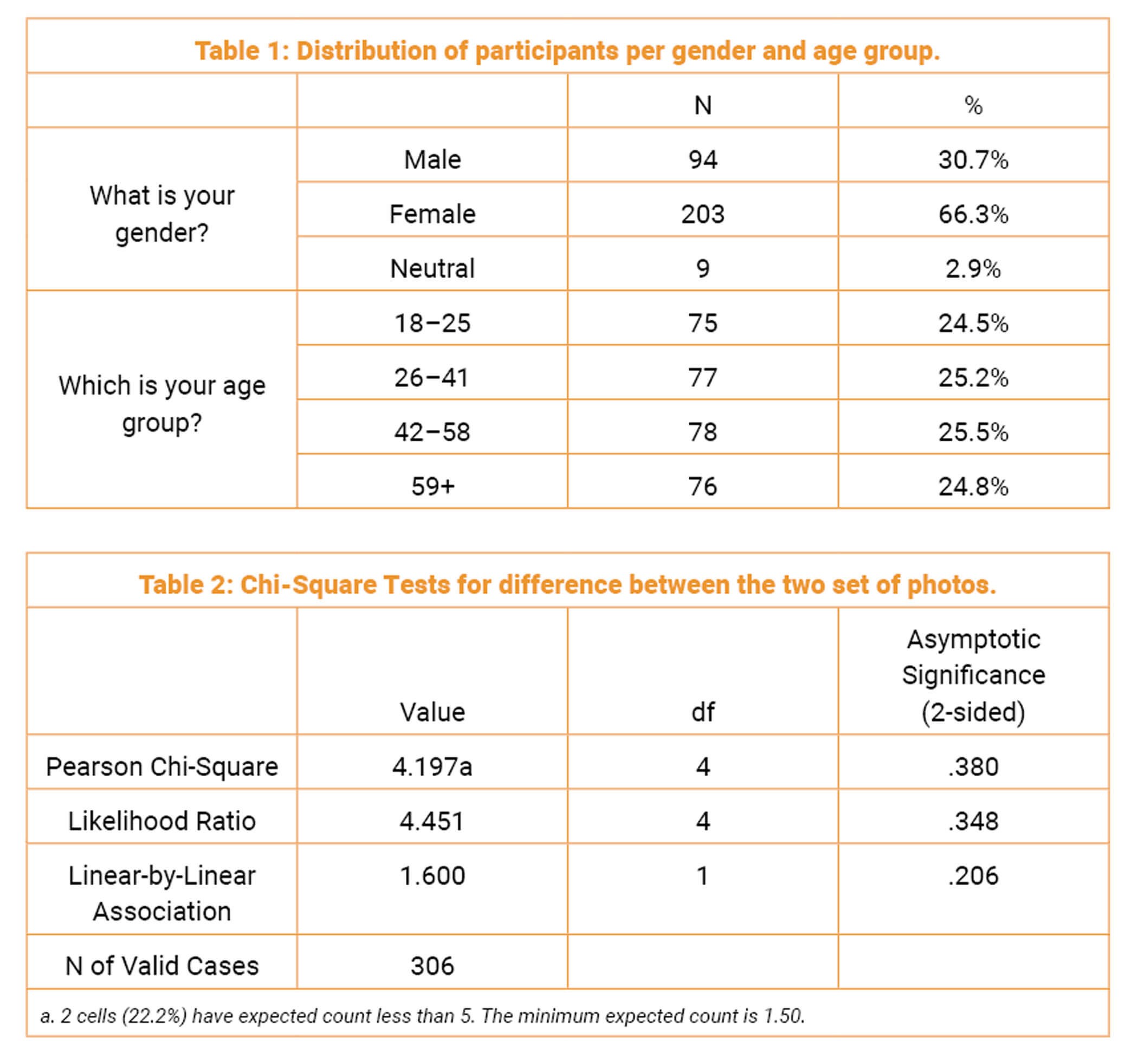
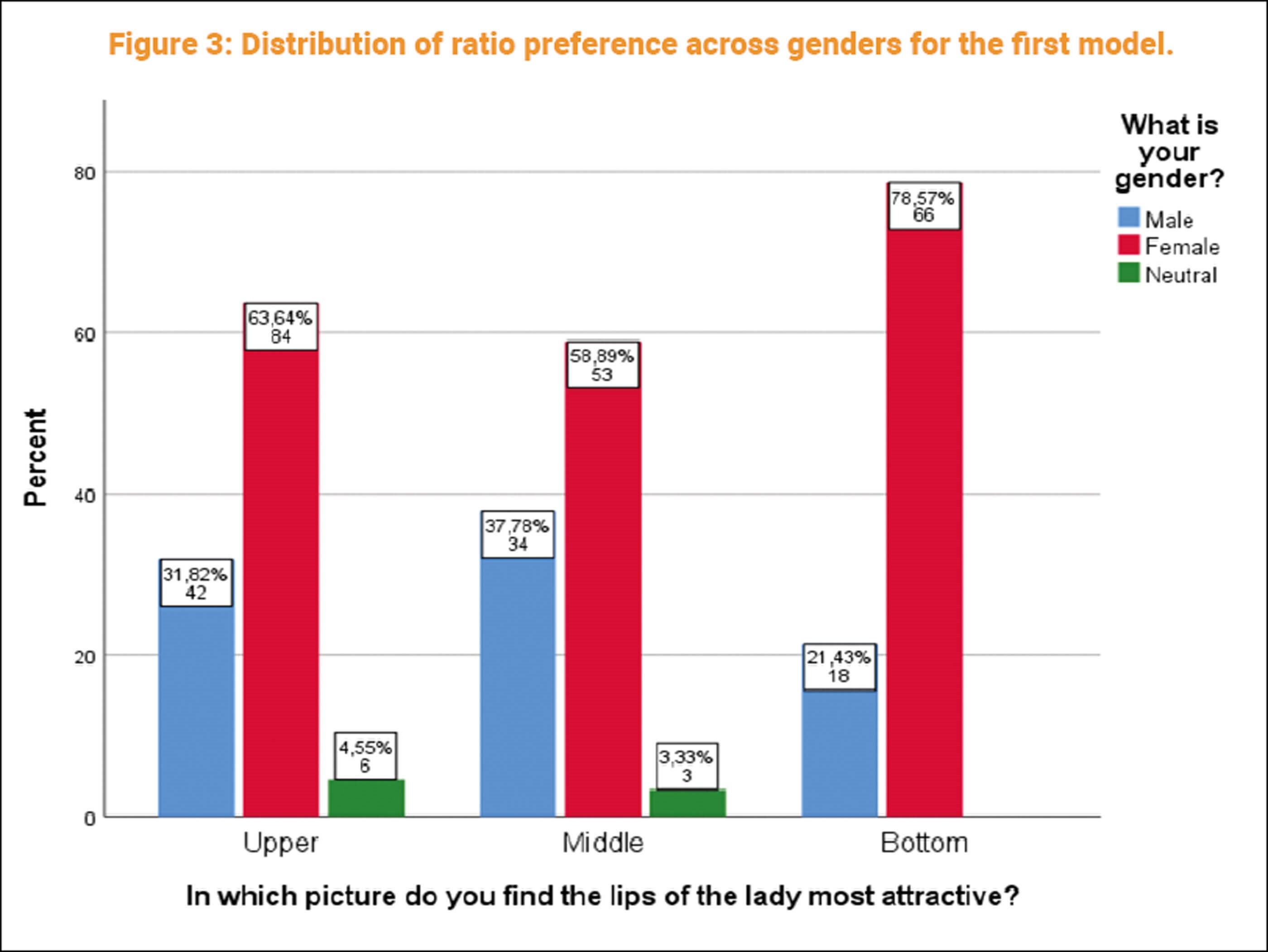
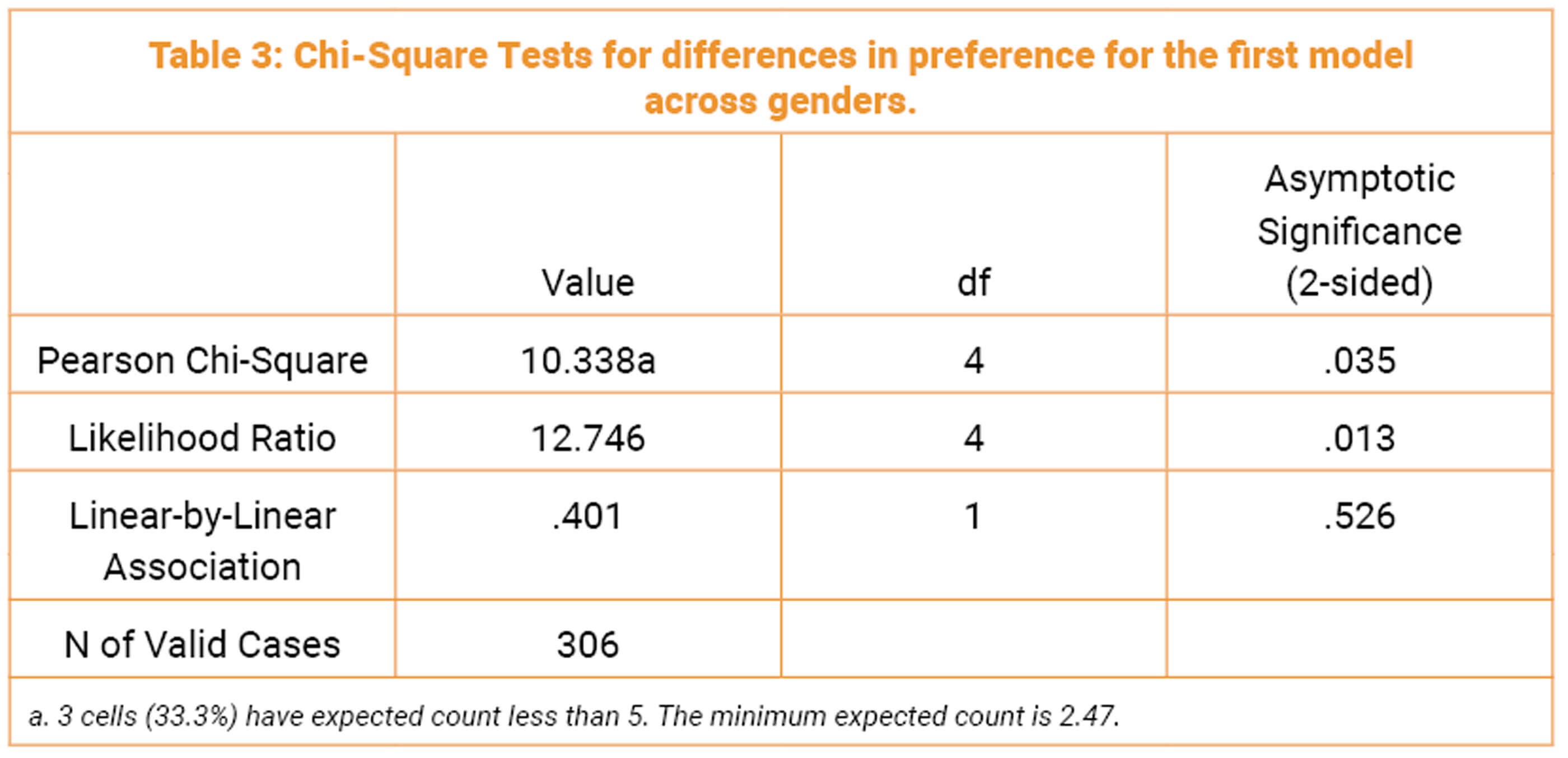
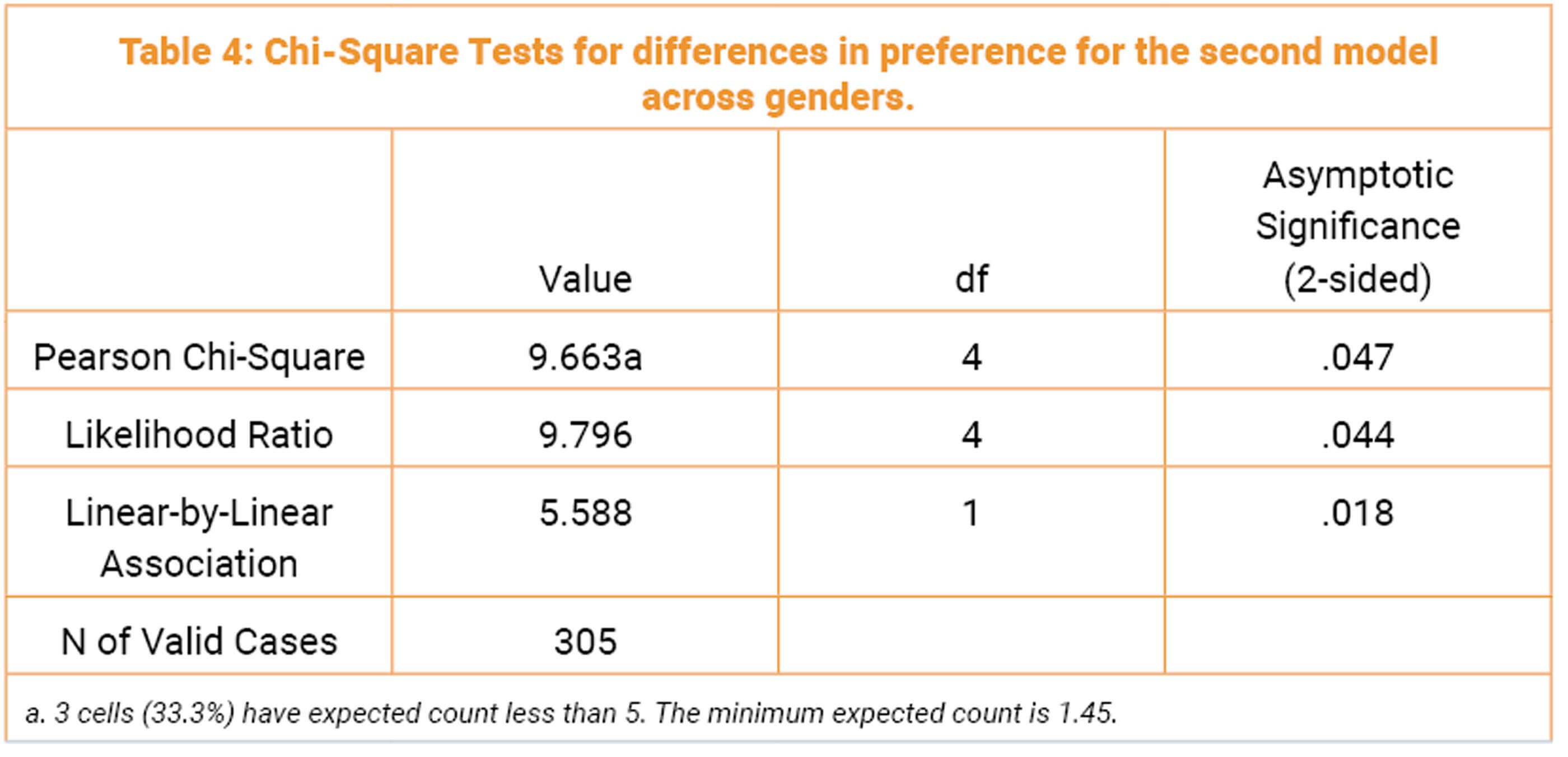
2. Distribution of ratio preference across genders
There was no statistically significant difference between the answers of the two series of photos in relationship with genders (p=0.380) (Table 2). However, females selected more frequently the 1:2 ratio (p=0.035) for Model 1 (phenotype II) (Figure 3, Table 3) and the 1: 1 ratio for Model 2 (phenotype III) (p=0.047) (Figure 4, Table 4) comparing to males.
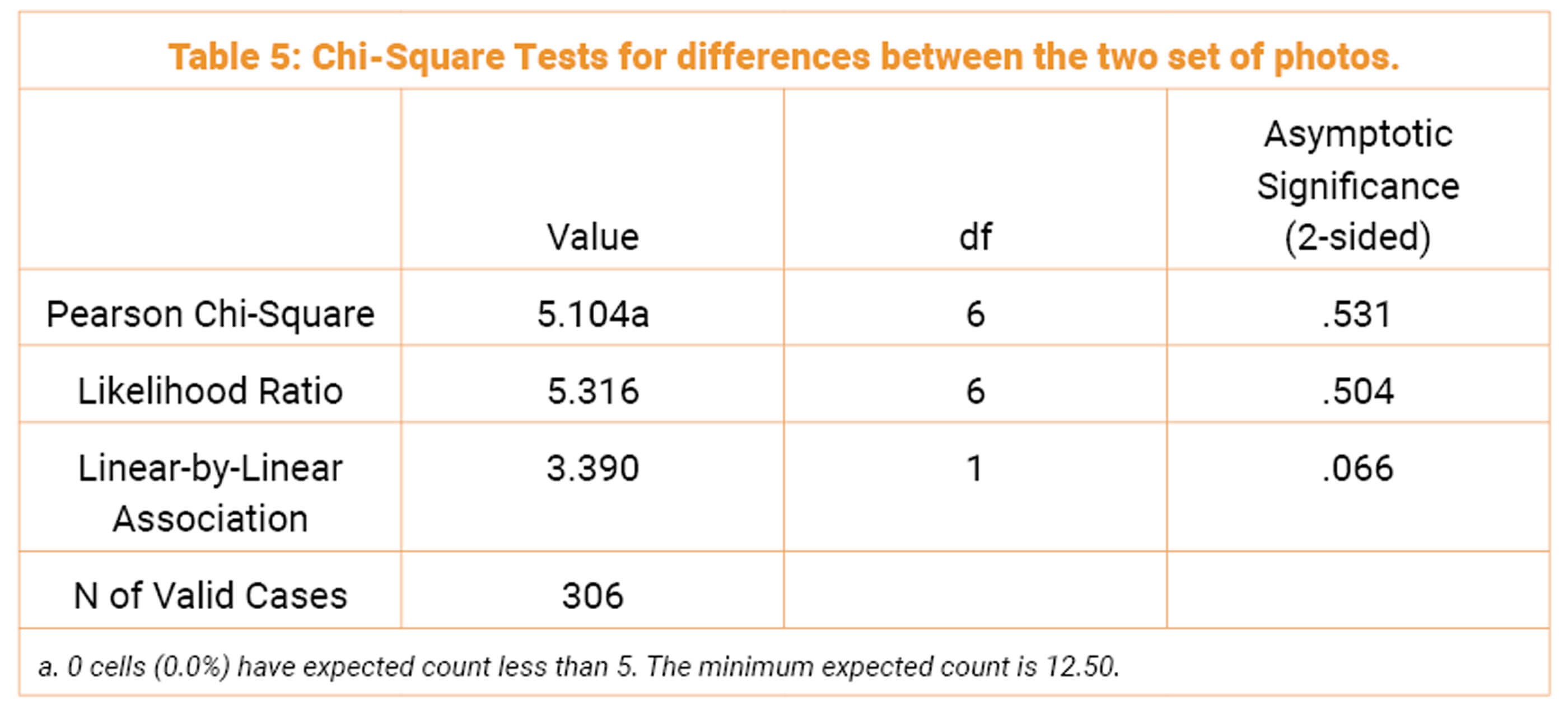
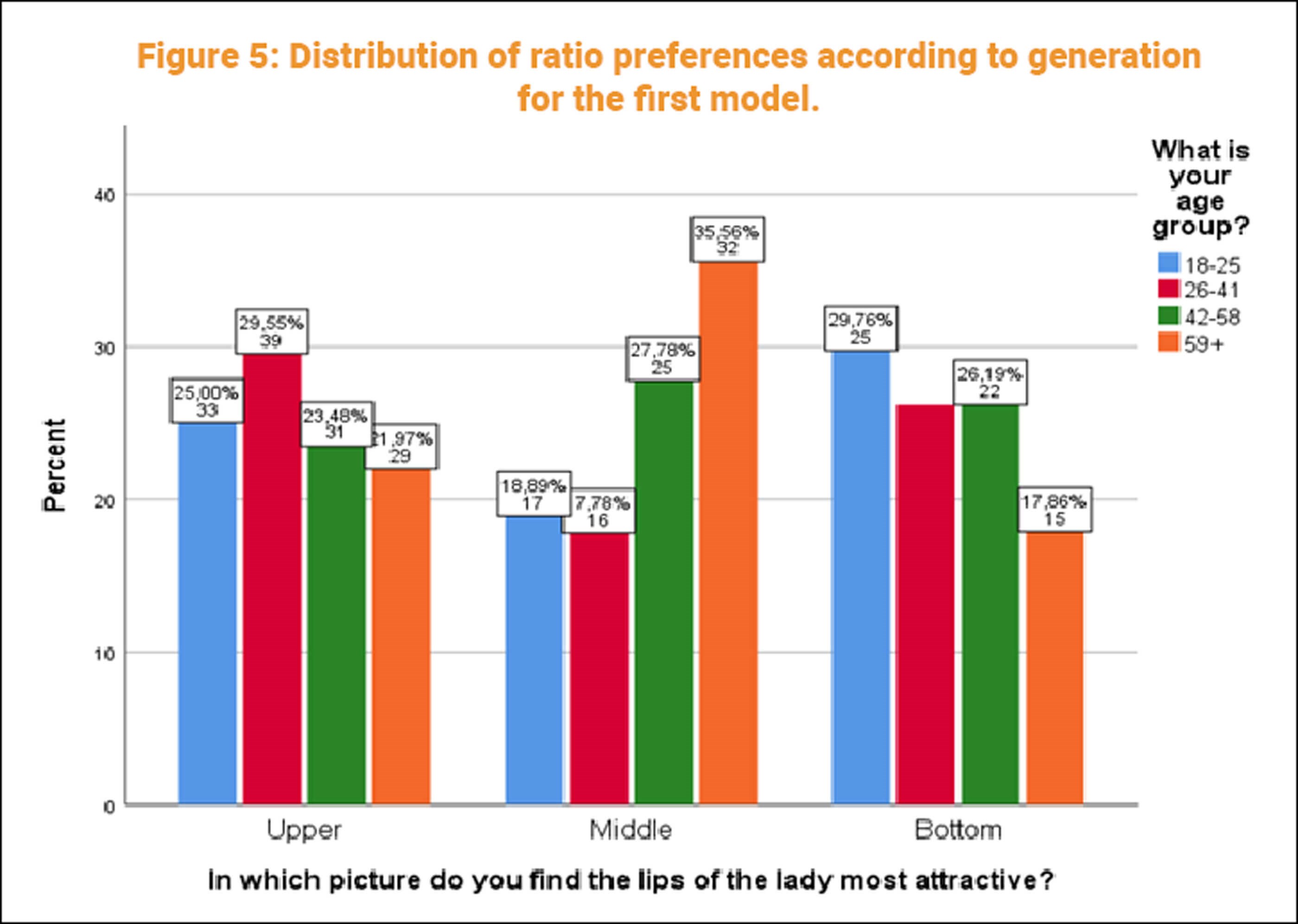
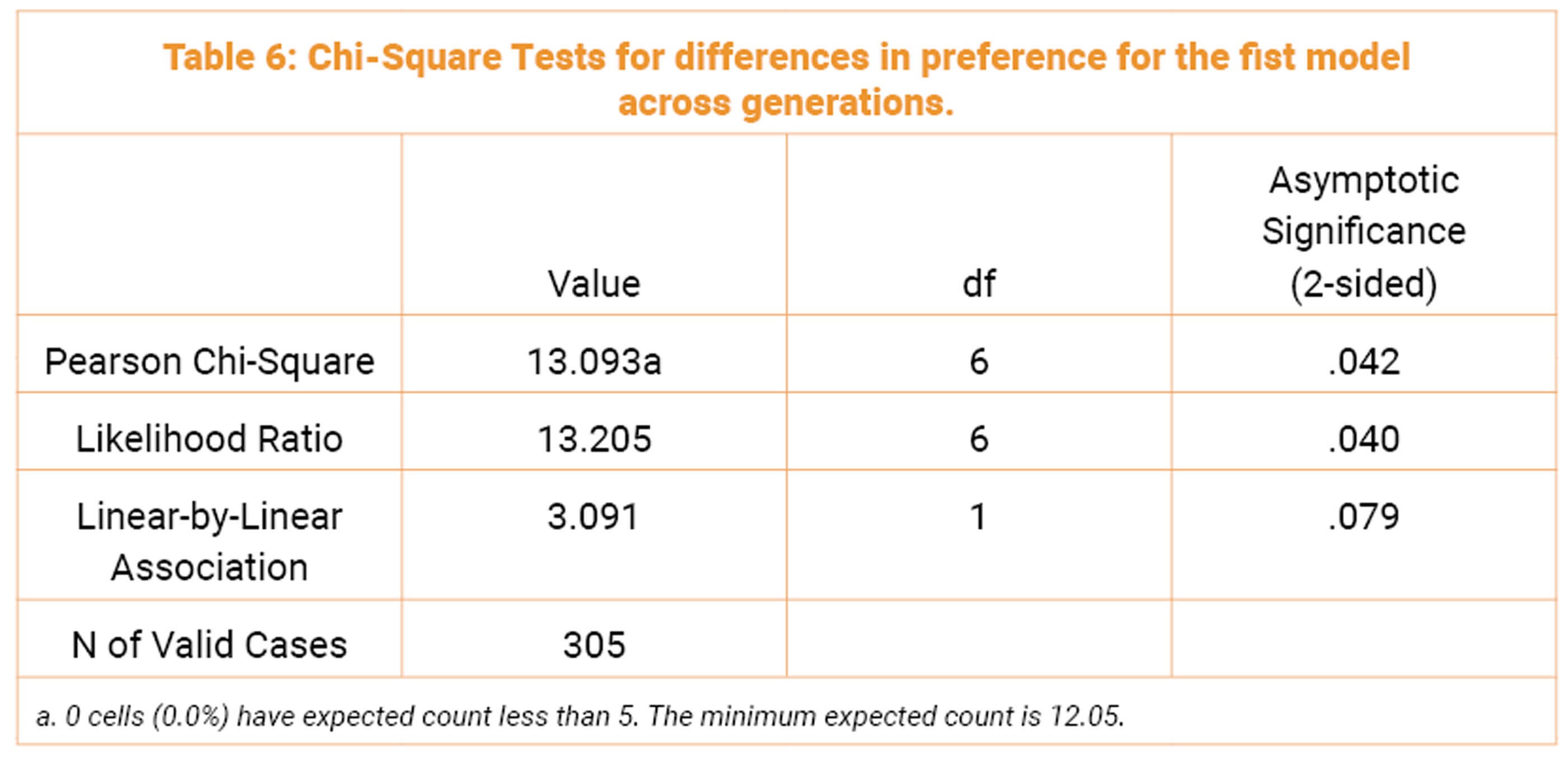
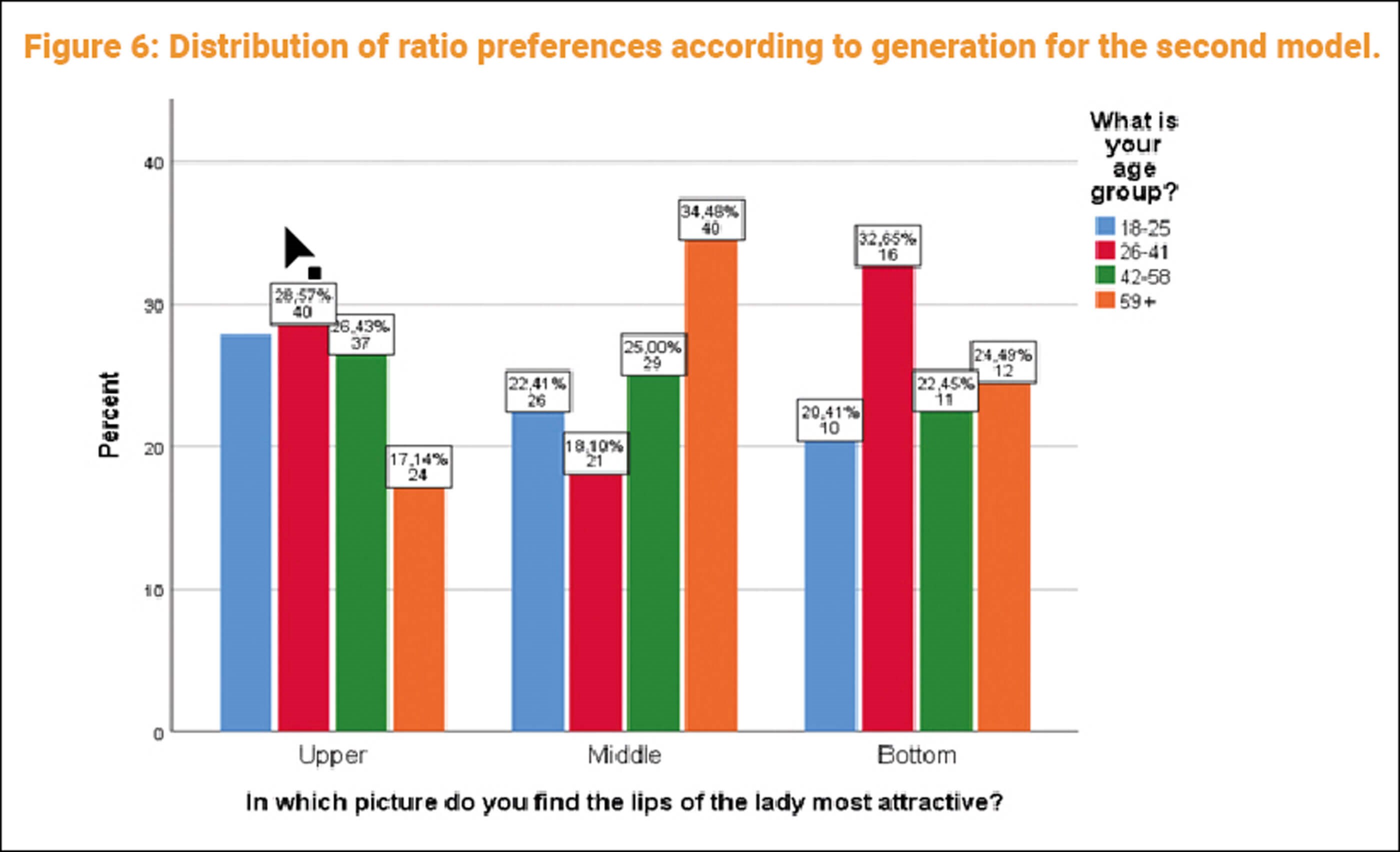
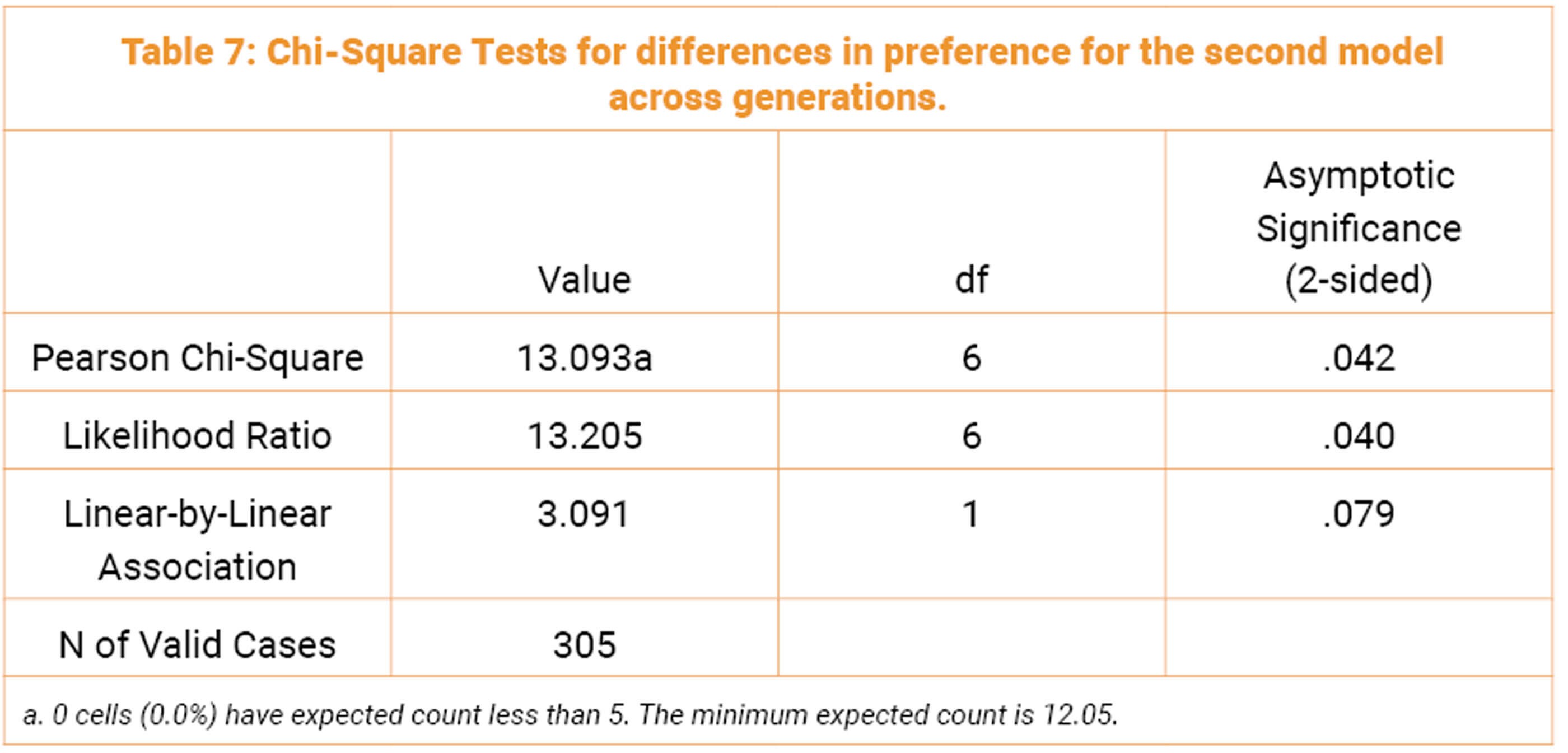
2.1. Distribution of ratio preference across age groups
There was no statistically significant difference between the answers of the two series of photos in relationship with age groups (p=0.531) (Table 5). For both models, Baby Boomers preferred the 1:1.6 ratio comparing to other age groups (p=0.035) (Figure 5, Table 6) (p=0.035) (Figure 6, Table 7), leading us to conclude that Baby Boomers prefer the all-time classic golden ratio.
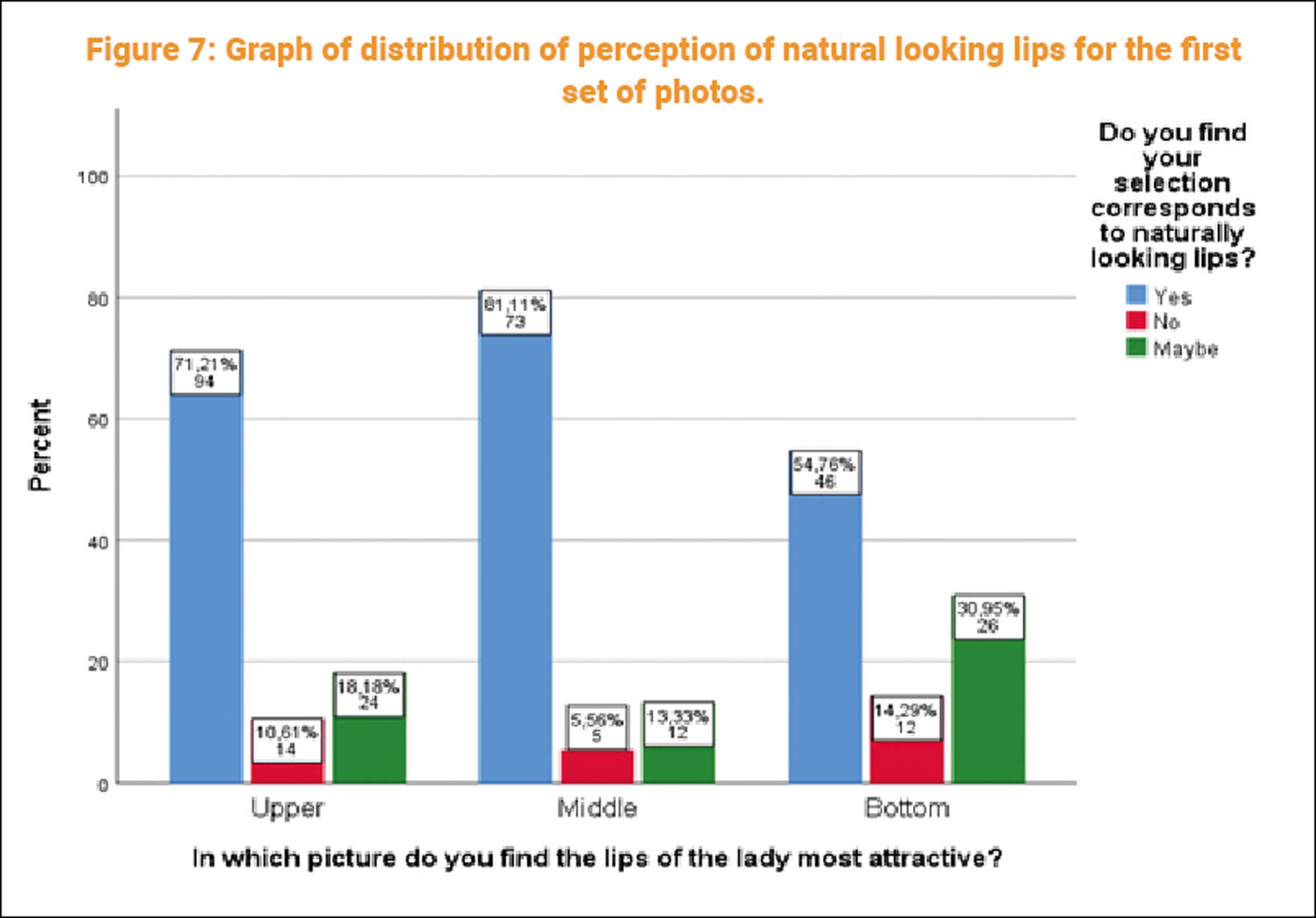
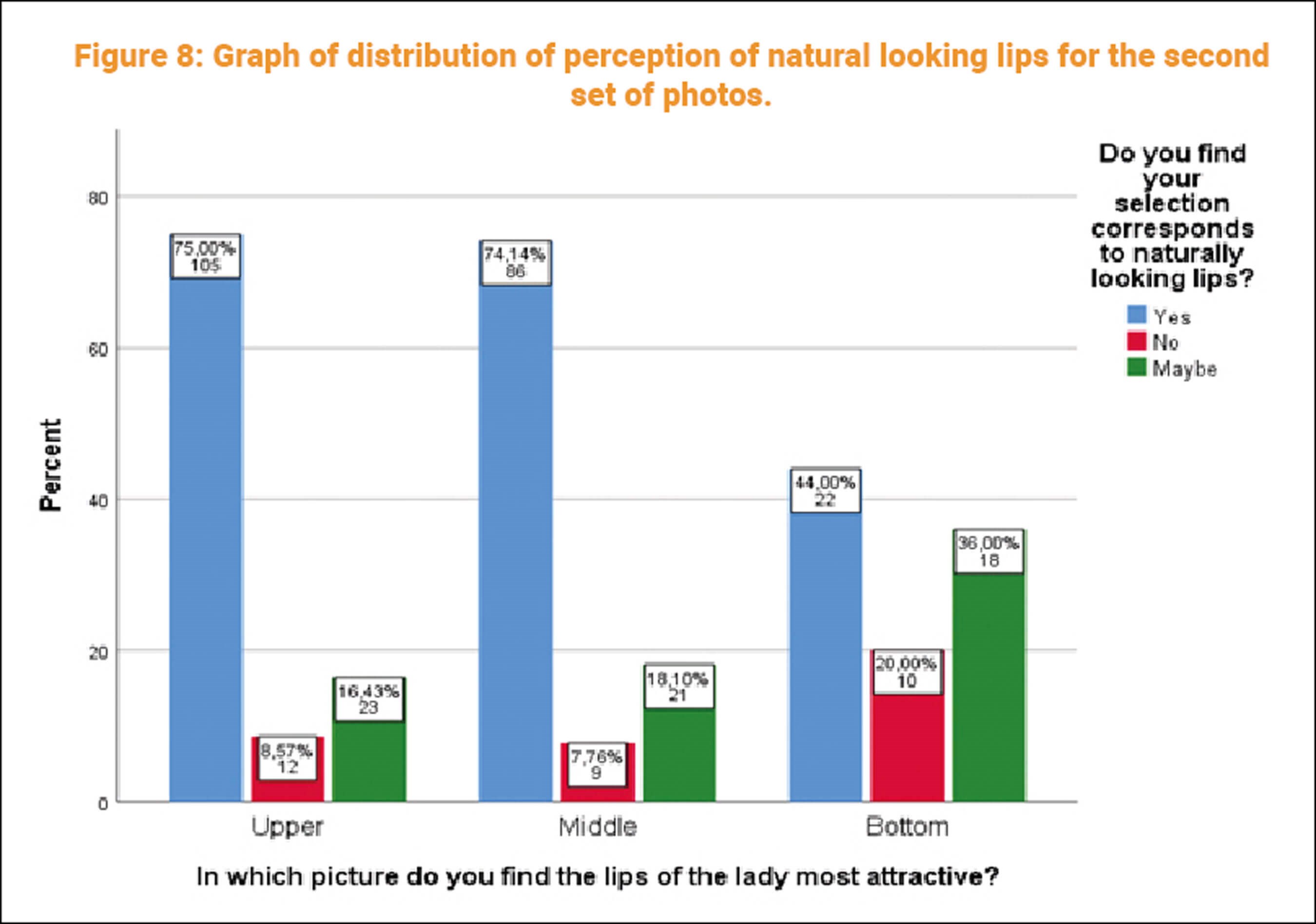
2.2. Differences in findings for ratio preference between the two series of photos
Most of the respondents (57.2%) checked the same proportions for both series of pictures (Table 7). In the comments section of the respondents with different answers for the two series of photos, it was observed that most of them stated they could not tell the difference in the lips of the pictures of Model 1. We assumed that if the respondents could not tell the difference, subsequently their answers for Model 1 may not be as valid as for Model 2, and that since the models were of similar age, the difference was relevant to their phenotype. In the first set of pictures the model is of phenotype II and has very pale lips, and in the second series of photos, the model is of phenotype III and has darker, therefore more noticeable, lips.
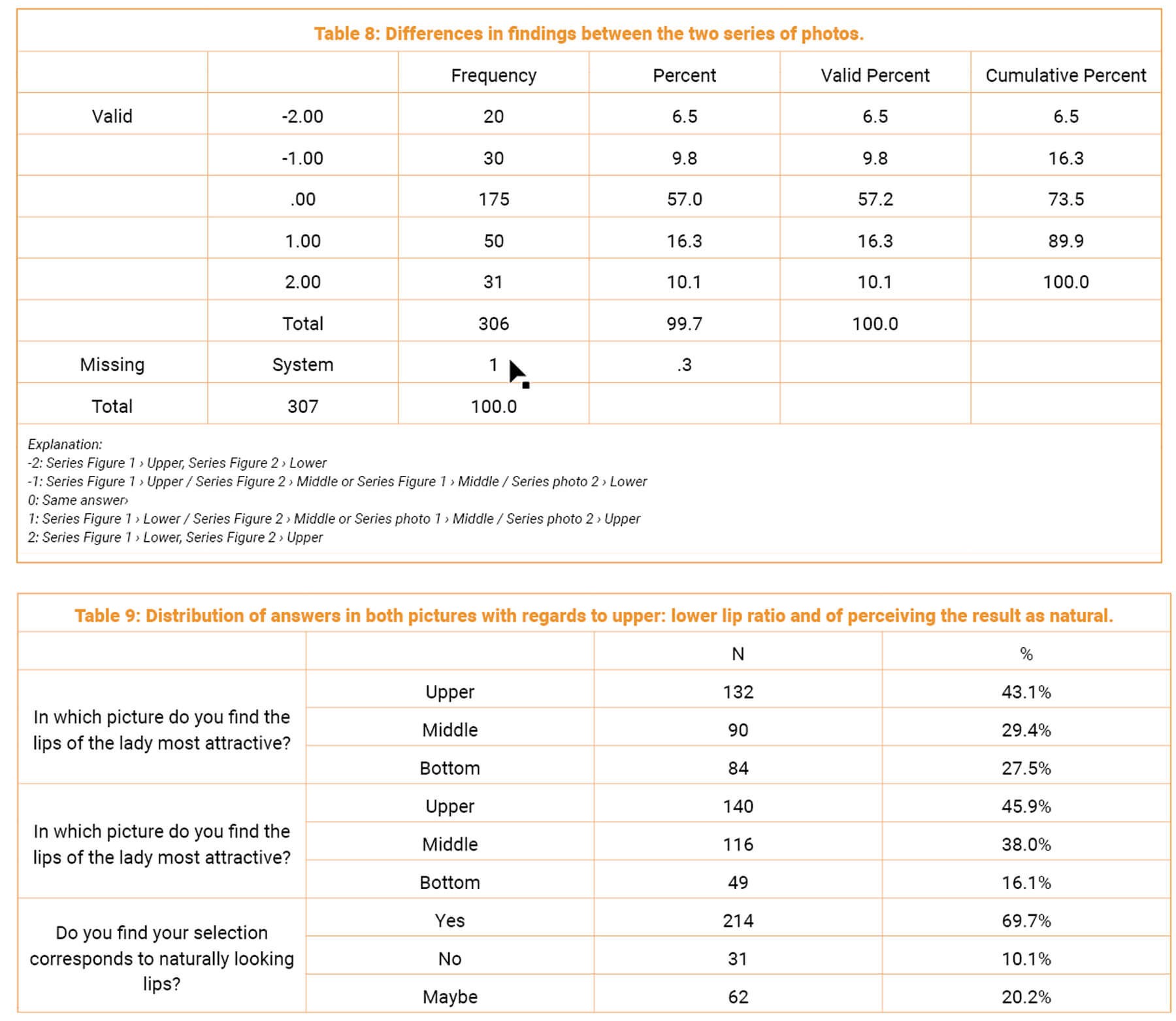
3. Perception of naturally looking lips
Most of the respondents found their selection natural (69.7%). Only a few found that the picture they chose was not natural (10.1%). However, there is a significant percentage (20%) who were not sure whether their choice is of a natural result (Table 8).
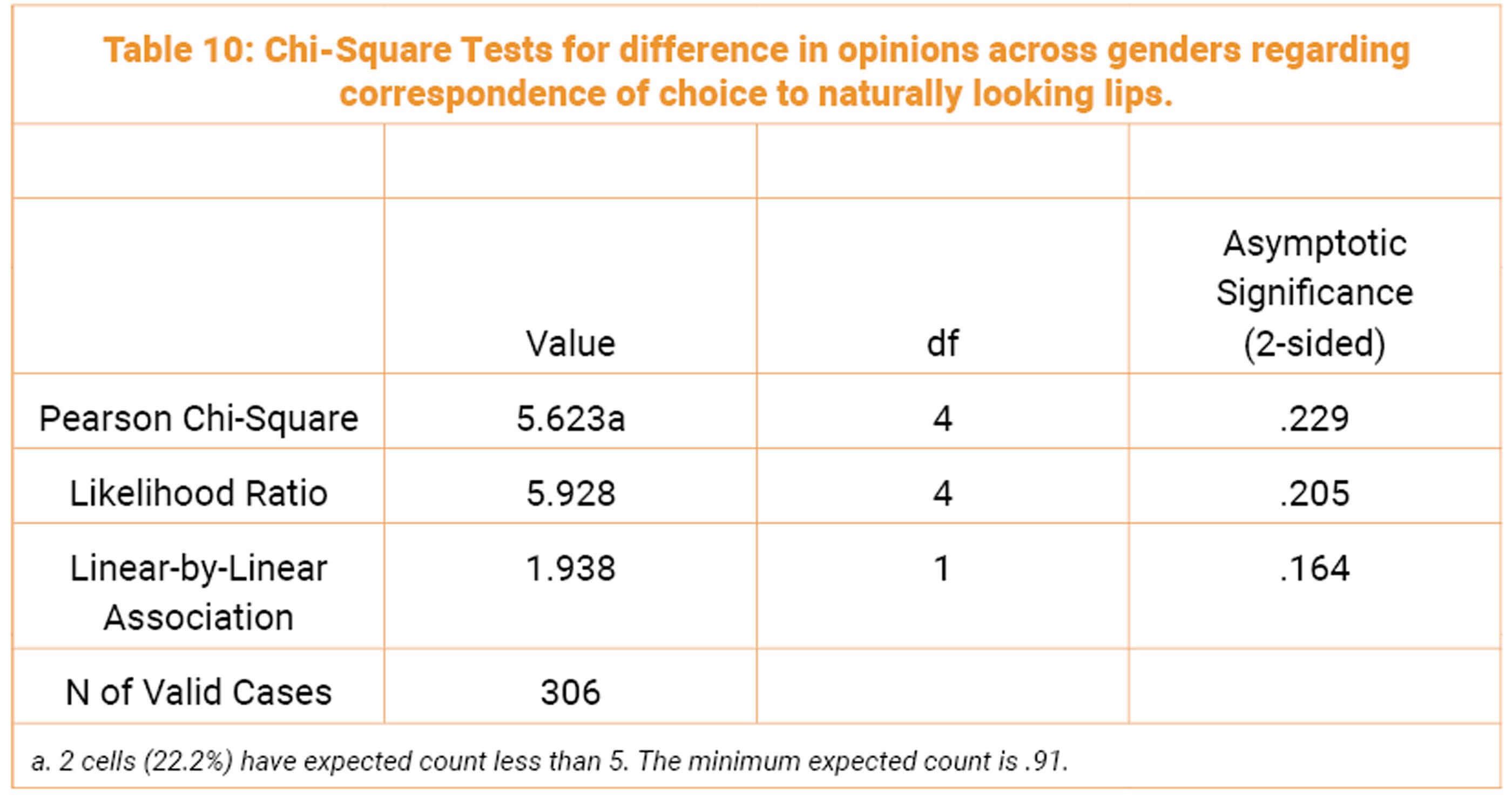
3.1. Difference in opinions across genders and generations regarding correspondence of their choice to naturally looking lips
No statistically significant difference was found in perception of naturality of the chosen lips across genders (p=0.229) (Table 9) and across generations (p=0.132) (Table 10).
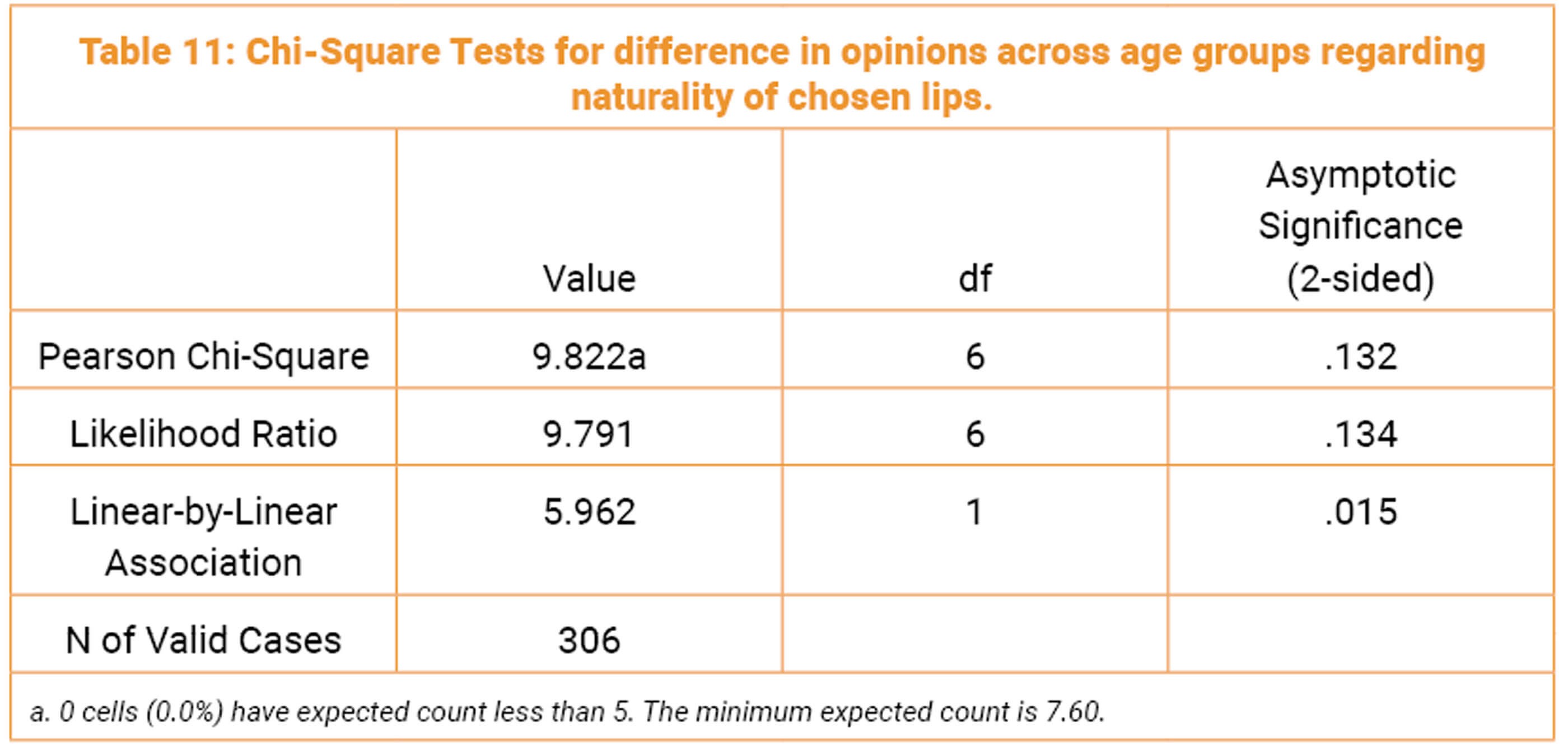
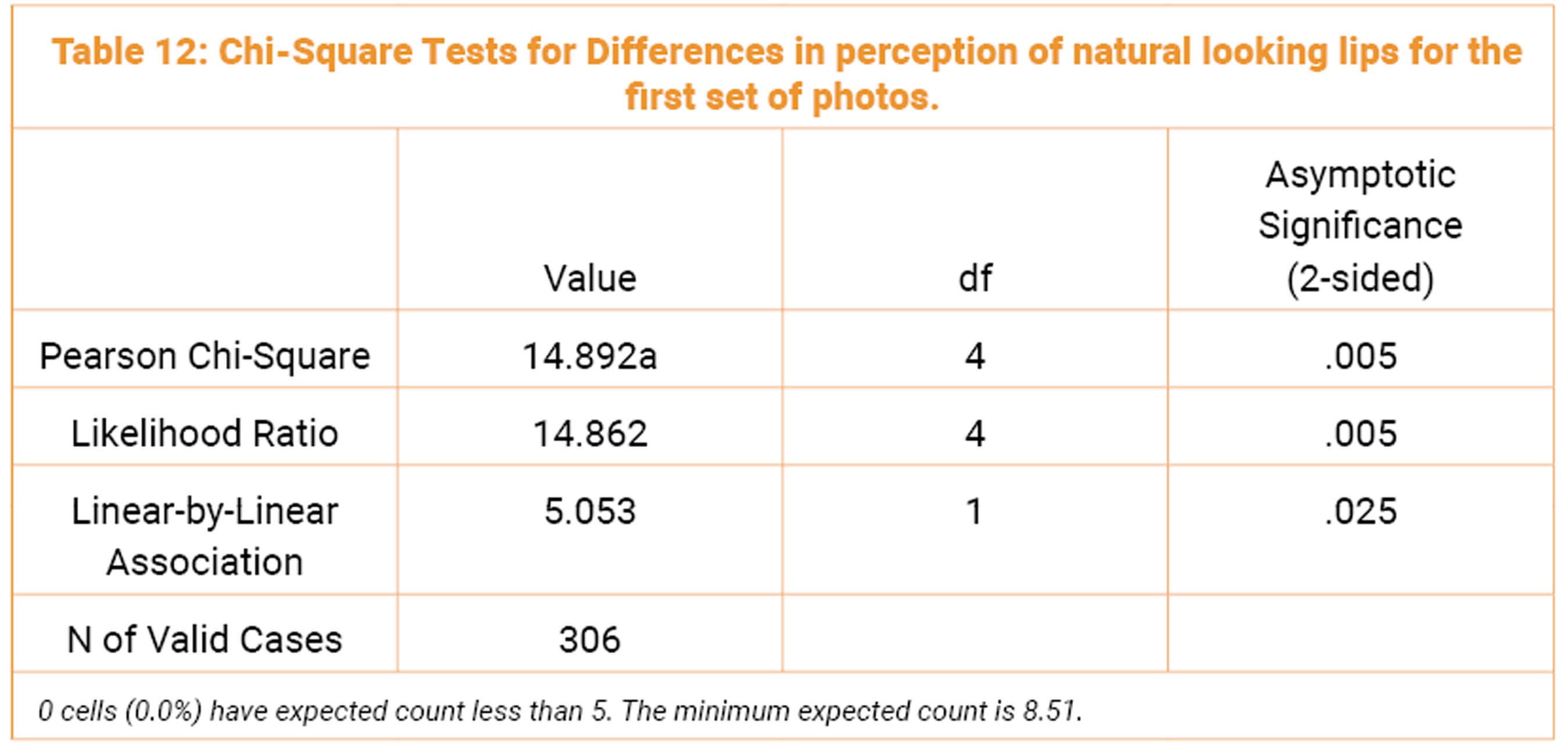
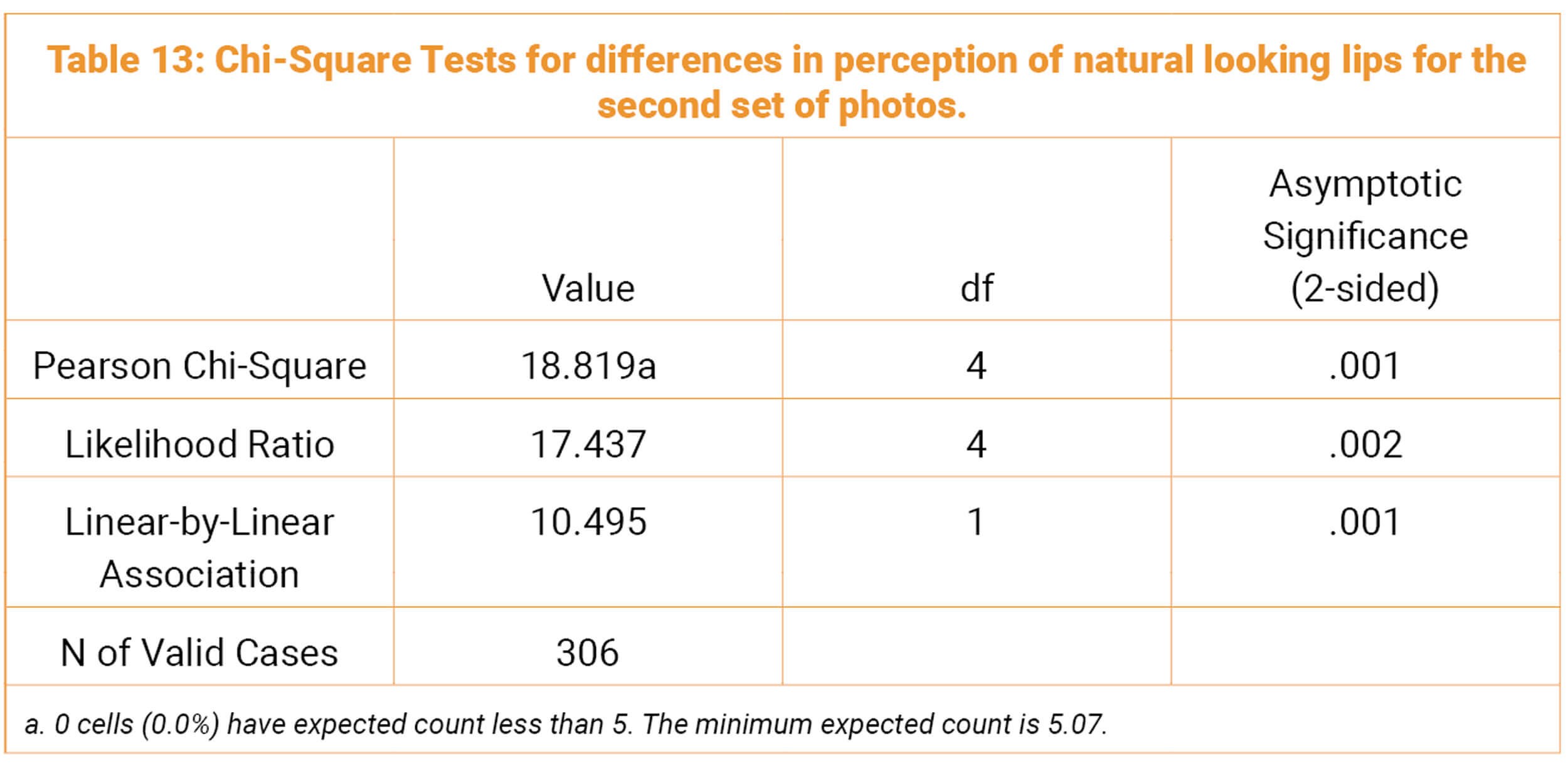
3.2. Difference in opinions regarding correspondence of their choice to naturally looking lips in relationship with the ratio chosen
There is a statistically significant difference in correspondence of choice to naturally looking lips in both sets of photos. Less people who checked the 1:2 proportion found their choice natural comparing to the ones who preferred the 1:1.6 and the 1:1 (first set: p=0.005, Figure 5, Table 11; second set: p=0.001, Figure 8, Table 12).
Discussion
Facial injectable interventions are meant to modify angles and dimensions, aiming at achieving the desired volume and proportions. Therefore, a full-face assessment is pivotal before deciding on how and where to perform cosmetic procedures, and, in the case of fillers, the type of HA to be injected.
Undoubtedly, there is no such a thing as a single trait or human face that is universally recognised as beautiful. As aesthetic practitioners, we have to keep in mind that beauty concepts cannot be standardised. On one hand, multiple factors should be considered when assessing a face and developing a management plan [5]. Beauty patterns and patients’ expectations are extremely variable, reflecting former inner experiences and cultural and racial differences. On the other hand, two features remain constant and desirable across countries, cultures and age groups, namely symmetry and proportions. Indeed, regardless of gender, age or location, attractive traits consist of youthfulness, averageness and pleasant expressions [6,7].
The need for a full assessment of the face relies on the fact that the ageing process affects it as a whole, from the upper to the lower thirds. Broadly speaking, ageing plays a major impact on the bones of the orbits, cheeks and chin, in addition to causing fat pads’ descent and weaknesses of the muscles and fibrous ligaments. A detailed knowledge of facial anatomy is therefore mandatory when assessing a candidate for cosmetic interventions.
One of the main points of facial analysis is the lips. The vermilion border corresponds to the junction between the adjacent skin and the red part of the lips. The curved line formed by the vermilion border of the upper lip is called ‘cupid’s bow’. The tubercles represent the anterior top projection of the lips in the midline. The philtrum and its pillars are also a part of the upper lip. The lips blood supply comes from the upper and lower labial arteries, which are branches of the facial artery [5].
Anthropometric studies have demonstrated the most important contributing factors to what is considered the ideal lips: fullness in relation to facial width and a greater vermilion height. In these terms, the ‘golden ratio’, or the ‘divine proportion’, is very often recognised as the key to human beauty and attractiveness. Indeed, the volume and height of the vermilion (red part) of the upper to the lower lip should ideally fit the golden ratio. In the Caucasian female population, this is particularly acceptable as the ideal youthful ratio for the lips [7].
The golden ratio corresponds to the Φ (phi) number and was first described by the Greek mathematicians, Euclid and Pythagoras. Phi was given from the Greek sculptor Phidias who used the golden ratio as an architectural basis in the design of the Parthenon temple. Phi is an irrational number derived from a mathematical formula with a value of 1.618033988749... The ratio is considered the key to the mystery of attraction and aesthetics and has been used for anthropometric measurements in masterpieces of art like Aphrodite statues in ancient Greece and Leonardo da Vinci’s paintings. Two dimensions fit the golden ratio if the ratio of their sum to the larger of the two dimensions equals approximately 1.6 (e.g. for two dimensions a and b, (a + b)/a = 1.618) [8–10]. Examples of famous women with classic beauty and golden lip ratios are Brigitte Bardot, Mila Kunis, and the recently voted as ‘mathematically the most beautiful women in the world’, Bella Hadid and Jodie Comer.
However, lip aesthetics change throughout time periods and voluptuous lips with other vertical height ratios have recently gained popularity. Celebrities and public figures have long been shown to be influencers of human preferences [11] and a contemporary preferred female upper / lower lip ratio has been found to be 1:1 as in models Doutzen Kroes and Rosie Huntington-Whiteley. Following this trend, the ‘Russian lips’ refer to a lip augmentation technique where 1:1 proportion is aimed. On the other hand, actresses and models well known for their beauty, such as Angelina Jolie, Scarlet Johansson and Alessandra Ambrosio, fit a 1:2 upper-to-lower lip ratio.
Lip aesthetics are also influenced by ethnic and cultural background. A large study in 2017 showed significant differences among lip shape preferences across individuals from different ethnic background [12]. Additionally, in a review performed the same year, it was found that it is inappropriate to use Caucasian measurements when performing lip augmentation in females of Asian and Hispanic origin [13]. One of the hottest trends first exhibited in Korea that has gained popularity at the Middle East is ‘cherry lips’, while in Western countries, fuller shapes (as ‘Russian Lips’) seem to be sought after by female patients.
The use of digital technology accelerated during the Covid-19 pandemic when people were restrained in their houses [14]. Along with this rise, some ‘ideal’ facial features proportions have been promoted by bloggers and influencers to individuals who are trying new shapes to be socially accepted. However, pictures and videos on social media are idealised from the use of filter applications that digitally alter facial features. Individuals can now visualise how they look after minimally invasive aesthetic procedures such as lip augmentation.
Regarding the impact of social media across age groups, it has been found that Millennials are highly affected. For instance, around 70% of Millennials purchase beauty products based on posts from social networks [15]. Gen Z’ers spend several hours online and are the second-fastest adopters of social commerce behind Millennials with 43% percent having purchased from a social media platform and 58% of consumers having used social media for customer service. Gen X adopted social media use right alongside Millennials, and their usage is growing with the majority stating that social media is an essential part of their life generations. On the other hand, Baby Boomers have been slower to adopt social media initially, however after the pandemic there seems to be an increase in social media use. At the moment, only 40% of Baby Boomers view social media as an essential part of their lives, however 53% use social media, and similarly to Gen X’ers, prefer more established platforms as Facebook to ‘kill time’, a fact that positions them on par with other generations [16].
Our data analysis revealed that among men and women of all age groups, the 1:1 ratio between the upper and lower lip was preferred (43.1% and 45.9% for the first and second model respectively) over the 1:1.6 and 1:2 ratios. However, when associating ratios with age groups it was found that Baby Boomers preferred the more classic 1:1.6 ratio compared to other age groups (p=0.035). We believe that Gen Z’ers, Millennials and Gen X’ers who spend more time browsing the internet are exposed more to images of younger models having a 1:1 lip ratio compared to Baby Boomers.
Another interesting observation was that due to the first model having a skin type II, females answered more frequently the 1:2 ratio (p=0.035) when compared to males, and for the second model, females preferred the 1:1 ratio more often than males (p=0.047). According to the comments at the end of the questionnaire, many participants found the first models’ lips ‘pale’ and stated they chose the 1:2 ratio because they seemed ‘fuller’.
These results lead us to believe that females generally prefer more accentuated lips. This is in accordance to the fact that females are likely to request solely upper or lower lip augmentation, not considering the need of also volumising the opposing lip in order to maintain a good balance between them. Furthermore, there is a possibility that females possibly voted the lip ratio of the influencer they wish to resemble.
Another interesting observation in the results was that regardless of age and gender, a considerable amount of participants (20%) were not sure whether their choice looked natural; among the participants who found their choice natural, the ones who preferred the 1:2 proportion were significantly less compared to the ones who preferred the other ratios (first model: p=0.005; second model: p=0.001). These results show that some individuals prefer accentuated lower lips, although they may not seem natural, and that most people find both 1:1 and 1:1.6 lip ratios natural, possibly because they correspond to lips of a public figure / influencer.
Last but not least, there is a need to discuss and spread more knowledge on body dysmorphic disorder (BDD), which is a disease listed in DSM-IV characterised by distressing concerns on physical appearance. Its prevalence is high in clinical settings, especially in dermatology and cosmetic surgery, where it can be as high as 50%. Its relevance is based on the fact that the majority of patients with BDD are seeking cosmetic treatments, including lip fillers (estimated rates of 71–76%). Unfortunately, the great majority of them will never be satisfied with the outcomes. Due to the high prevalence of BDD in the cosmetic setting and the potential negative consequences of treating such patients, it becomes extremely relevant to create awareness amongst aesthetic practitioners and mental health providers that non-mental health interventions are highly unlikely to tackle BDD symptoms. The current consensus is that patients presenting with symptoms of BDD need to be correctly assessed and diagnosed by a multidisciplinary team. Pharmacotherapy and psychotherapy constitute the first choice treatment modalities for them.
Conclusion
In this paper, we presented an innovative research using an online survey aiming at assessing lips preferences across different age groups (generations) and genders. We reached a considerable sample of 307 participants and found statistical significance in the results. Our data analysis revealed that among men and women, the 1:1 ratio between the upper and lower lip was preferred over the 1:1.6 and 1:2 ratios. When the sample was stratified in generations, we found a greater preference for the more classic 1:1.6 ratio among Baby Boomers, which can be explained by the fact they spend less time on internet, compared to the newer generations.
The most natural and beautiful appearance, in our opinion, as aesthetic professionals, remain based on lips proportions that respect the golden ratio, as universally accepted by the literature, in particular for Caucasian women. However, there is a current trend towards a 1:1 lip ratio, probably due to the popularity of ‘Russian lips’, which we should consider. It is up to us, physicians, to educate and orientate our patients regarding lips anatomy and their ideal ratio. Overfilled lips, creating the aspect of ‘duck’ or ‘sausage’ lips, can be the result of overcorrection, but also of the lack of knowledge or understanding of the normal anatomy of the lips by both practitioners and the general population. It is also our duty to screen and identify patients with symptoms of BDD who should not undergo any aesthetic intervention without an appropriate multidisciplinary diagnosis and follow-up.
References
1. Bueller H. Ideal facial relationships and goals. Facial Plast Surg 2018;34(05):458–65.
2. Sisti A, Aryan N, Sadeghi P. What is beauty? Aesthetic Plast Surg 2021;45(5):2163–76.
3. Zhan J, Liu M, Garrod OGB, et al. Modeling individual preferences reveals that face beauty is not universally perceived across cultures. Curr Biol 2021;31(10):2243–52.e6.
4. Bjornsson AS, Didie ER, Phillips KA. Body dysmorphic disorder. Dialogues Clin Neurosci 2010;12(2):221–32.
5. Rashimi S, Nair V, Britto GR. Cosmetic injectables in practice: Dermal fillers and botulinum toxin. JAYPEE Brothers Medical Publishers; 2020.
6. Rhodes G. The evolutionary psychology of Facial Beauty. Annual Review of Psychology. 2006;57(1):199–226.
7. Ding A. The ideal lips: Lessons learnt from the literature. Aesthetic Plast Surg 2021;45(4):1520–30.
8. Kar, M., Muluk, N. B., Bafaqeeh, S. A., & Cingi, C. Is it possible to define the ideal lips? Acta Otorhinolaryngol Ital 2018;38(1):67–72.
9. Prokopakis EP, Vlastos IM, Picavet VA, et al. The golden ratio in facial symmetry. Rhinology 2013;51(1):18–21.
10. Hashim PW, Nia JK, Taliercio M, Goldenberg G. Ideals of Facial Beauty. Cutis 2017;100(4):222–4.
11. Selkie E. Influence at the Intersection of Social Media and Celebrity. JAMA Netw Open 2022;5(1):e2143096.
12. Heidekrueger PI, Szpalski C, Weichman K, et al. Lip Attractiveness: A Cross-Cultural Analysis. Aesthet Surg J 2017;37(7):828–36.
13. Kollipara R, Walker B, Sturgeon A. Lip Measurements and Preferences in Asians and Hispanics: A Brief Review. J Clin Aesthet Dermatol 2017;10(11):19–21.
14. Pandya A, Lodha P. Social Connectedness, Excessive Screen Time During COVID-19 and Mental Health: A Review of Current Evidence. Front Hum Dyn 2021;3:684137.
15. Henriques M, Patnaik D. Social Media and Its Effects on Beauty. In: Levine PL, Santos JS (Eds.). Beauty – Cosmetic Science, Cultural Issues and Creative Developments. IntechOpen; 2021: doi:10.5772/intechopen.93322.
16. The generational marketing playbook: How to engage every age group on social (2023). Sprout Social.
https://sproutsocial.com/insights/
guides/social-media-use-by-generation/
[Link last accessed December 2023]
COMMENTS ARE WELCOME




